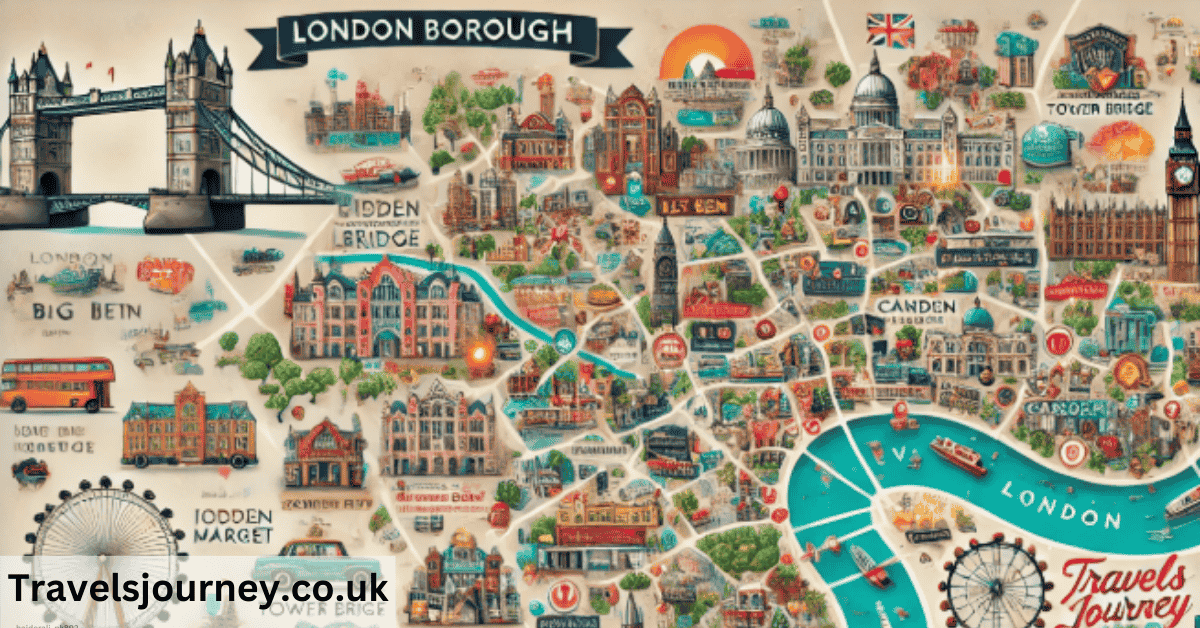Physical Address
304 North Cardinal St.
Dorchester Center, MA 02124
Physical Address
304 North Cardinal St.
Dorchester Center, MA 02124

London is a vast metropolis with deep history and culture across its 32 boroughs, each with its own distinct character. Whether you have never visited London before or have lived in the city for years or if you’re just keen to know how the capital works, knowing the boroughs is a key to learning about the street you’ll be walking on. From public parks to markets to landmarks to cozy hideaways, this guide will walk you through what to know about London’s boroughs.
Yes, Greater London is made up of 32 boroughs plus City of London, a separate historic and financial area. These belong to two groups: Inner London (the portion nearer to the city centre) and Outer London (section farther from the centre, which provides more greenery and suburban living). Each borough works as its own local authority, providing services such as education, transport, and housing.
Colonial interest in the 32 boroughs is far more abstract than labouring in Westminster, Camden, Kensington and Chelsea, Hackney, Tower Hamlets, and more. Each has its own council and unique character, from busy commercial precincts to sleepy suburbs.
Beauty, as we know, is subjective, however, some parts of London are absolutely gorgeous. Among the most scenic spots in the city are:
But beauty lurks in every corner of London, with each borough having its own hidden gems.
Most people think of London as one city but London is made up of 32 boroughs as well as the City of London, a total of 33 different (administrative) areas. These boroughs were created in 1965 to establish a more structured framework for administration and services throughout London.
Each borough has its own local council that deals with certain administrative tasks for example, public transport, waste collection and local schools.
London is stuffed with sights, many quite handily next to each other so you can tick off several in one trip. Below are clusters of popular attractions:
Exploring these areas together can save time and give you a richer experience of the city.
There is extreme wealth in London, but there are also areas of deprivation. Barking and Dagenham has frequently been identified as the poorest borough by income and by lack of employment. Newham, Tower Hamlets and Hackney are the other boroughs with high levels of poverty.
But despite the economic challenges, these boroughs pack in lots of culture and brawn of community spirit. Household name in rate tourism, for example, Tower Hamlets, which offers Brick Lane, helping mass street art and world famous curry houses, Hackney, for a vibrant creative scene, Featuring market galleries and music venues.
The best area in London to live will depend on your personal requirements. Some of the most highly rated areas are:
Each borough has its own flavor, be it affordability, subway access or lifestyle.
The richest borough in London being Kensington and Chelsea, neighborhoods within its confines host some of the more costly real estate on earth. There are luxury shops, restaurants that cater to a wealthy clientele and millions spent on property in upmarket areas such as Knightsbridge (home of Harrods) as well as Chelsea and South Kensington.
share bustling
Another wealthy Western boroughs include Westminster, Camden, Hammersmith & Fulham, London’s hippest district and known for its imposing terraced houses (mostly 19th century buildings that have been converted into luxury flats), élite schools as well as some of the capital’s most prestigious cultural institutions.
And yes, although people often use London to refer to the whole city, London has a small, autonomous part called the City of London. It is the historical heart of the capital and, at 1.12 square miles, acts as the financial centre.
Outside of those 32 boroughs is the City of London, which has its own local authority, the City of London Corporation. It also has its own governance, its own laws and even its own police force, the City of London Police.
The City of London Corporation is responsible for the City of London; the whole of London aside from the City is overseen by the Mayor of London and the Greater London Authority.
The City of London is run by a Lord Mayor of the City of London (not to be confused with the Mayor of London). The Lord Mayor is elected annually, and largely acts in the interests of the lessees of the financial district.
This historic setup dates back over 800 years, making the City of London one of the most unique political entities in the UK.
A borough-by-borough guide to London: America’s historic home. From the historic streets of Westminster, the street art in Hackney, and the leafy expanse of Richmond’s parks, each borough has its own destaca.
From hidden gems to bustling communities, grasping the London borough map, visitors and residents can access the authentic essence of one’s neighourhood.
For more travel insights, check out Travelsjourney.co.uk for expert guides and tips on exploring London and beyond!